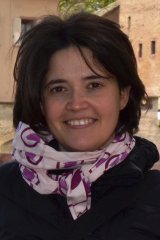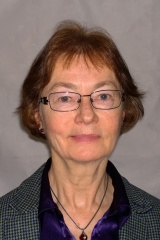Expertise & Current Research Activities
The Div of Applied Sensor Science, Dept. of Physics, Chemistry and Biology, at Linköping University (LiU)
was established around the development of chemical sensors with silicon carbide (SiC) based MOSFET devices
for high temperature (200–600 °C) sensing applications, such as emissions monitoring,
combustion control and exhaust after–treatment, as the main focus of research.
The head of division, Prof. Anita Lloyd Spetz, also holds a 50% position within the Microelectronics and
Materials Physics Laboratories at the University of Oulu. The group has strong collaboration with
Saarland University.
LiU contributes to EuNetAir with 20 years of experience of SiC–FET gas sensor research,
development and commercialization together with the spin–off company SenSiC AB.
Within the VINN Excellence Centre FunMat (Lloyd Spetz deputy director) MAX materials (conducting ceramics)
for ohmic contacts to SiC and as sensing layers are developed. Also sensor systems for harsh environments
and high temperature applications, e.g. for SO2, NOx, NH3, O2, H2S, methanol and soot are developed
in collaboration with industrial partners (Alstom Sweden AB, SenSiC AB, Volvo Technology,
Ford Motor Company (USA). Lloyd Spetz recently coordinated an MNT–ERA.NET project, SootSens,
soot sensors for control of the particulate filter in diesel exhausts. This work continues at
University of Oulu as a development of a portable personal particle detector for detection of size,
concentration, shape and content of particles. Other research areas at Applied Sensor Science at
Linköping University are related to the use of temperature and bias cycling and smart data evaluation
enabling one sensor to act as a sensor array. This work is performed together with Saarland University.
Unother viable research area is the development of epitaxial graphene on silícon carbide
as sensor material. Some activities is also spent on nanoparticles as sensing layers in the SiC–FET sensors
and silicon carbide as a platform for biosensors.
Researchers:
- Prof. Anita Lloyd Spetz, head of the group, 50% employed at University of Oulu, Finland
- Dr Mike Andersson, also 25% employed at SenSiC AB and from March 1, 25% at University of Oulu.
- Dr Robert Bjorklund, soot sensors, FET ammonia sensors for control of SCR and SNCR in power plants,
electronic tongue
- Dr Jens Eriksson, structural and electronic characterization of epitaxial graphene on SiC,
graphene sensors, nanoparticle based gas sensors, environmental SPM, Kelvin probe characterization
- Dr Donatella Puglisi, SiC/graphene sensors, graphene FET design and development
- Zhafira Darmastuti, PhD student, FET based sensors for SO2, H2S and methanol,
theoretical modelling of chemical reactions on sensor surfaces
- Christian Bur, PhD student (joint PhD student between Linköping University and Saarland University,
Germany, Prof Andreas Schütze), smart FET and metal oxide sensor, temperature cycled and
bias cycled operation (TCO, BCO), advanced data evaluation
- Hossein Fashandi, PhD student, processing and characterization of MAX material contacts to FET sensors,
MXene sensor material
- Peter Möller, research engineer, electronics and software development
5 Selected publications:
[1] A. Lloyd Spetz, J. Huotari, C. Bur, J. Lappalainen, A. Schütze, M. Andersson,
Chemical sensor systems for emission control from combustions, Sensor and Actuators B,
in press. Doi: 10.1016/j.snb.2012.10.078
[2] M. Andersson, R. Pearce, A. Lloyd Spetz, New generation SiC based field effect transistor gas sensors,
Sensors and Actuators B Chemical, in press. Doi:10.1016/j.snb.2012.12.059
[3] C. Bur, P. Reimann, M. Andersson, A. Lloyd Spetz, and A. Schütze,
New method for selectivity enhancement of SiC field effect gas sensors for quantification of NOx,
Microsystem Technologies, Springer–Verlag, Berlin, 18, 7 (2012) 1015–1025. doi: 10.1007/s00542–012–1434–z
[4] Z. Darmastuti, M. Andersson, L. Ojamäe, A. Lloyd Spetz, M. Larsson, N. Lindqvist,
SiC based field effect transistor for H2S detection, Proc. IEEE Sensors 2011, Limerick, Ireland,
October 28–31, 2011, pp. 770–773
[5] M. Andersson, P. Ljung, M. Mattsson, M. Löfdahl, A. Lloyd Spetz,
Investigations on the possibilities of a MISiCFET sensor system for OBD and combustion control
utilizing different catalytic gate materials, Topics in Catalysis, 30 / 31 (2004) 365–368.
- Gas mixing systems, 8 gas regulators, software for control and data collection
- Electronics and software for operation of gas sensors based on FET devices or
resistive type sensors from RT to 800 °C
- Environmental mass spectrometer
- Environmental Kelvin probe
- Environmental SPM
- Sputtering system with 3 targets
- Evaporation system
- Bonding machine
- Surface welding machine
- Scriber

| ERIKSSON Jens
Lab.: Applied Sensor Science
Org.: Linköping University
Country: Sweden
Tel. +46 708393122 - Fax
e-Mail jenser@ifm.liu.se Web https://www.ifm.liu.se/applphys/applsens/
|

| PUGLISI Donatella
Lab.: Applied Sensor Science
Org.: Linköping University
Country: Sweden
Tel. +46 70 0895104 - Fax
e-Mail donpu@ifm.liu.se Web http://www.ifm.liu.se/applphys/applsens/
|

| LLOYD SPETZ Anita
Lab.: Applied Sensor Science & Microelectronics and Material Physics Laboratories
Org.: Linköping University & University of Oulu
Country: Sweden and Finland
Tel. +46 705 176788 - Fax +46 13 137568
e-Mail spetz@ifm.liu.se Web http://www.ifm.liu.se/applphys/applsens/
www.liu.se/forskning/funmat?l=en&sc=true
www.ee.oulu.fi/research/miklab/index.html
|
| |